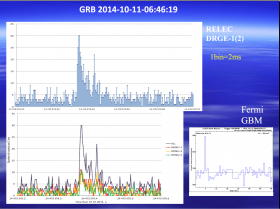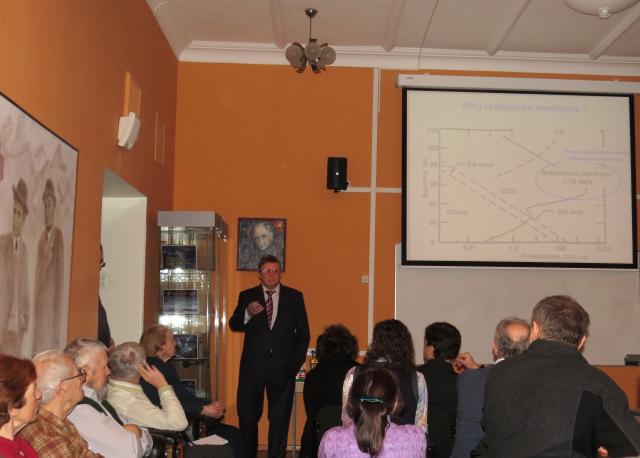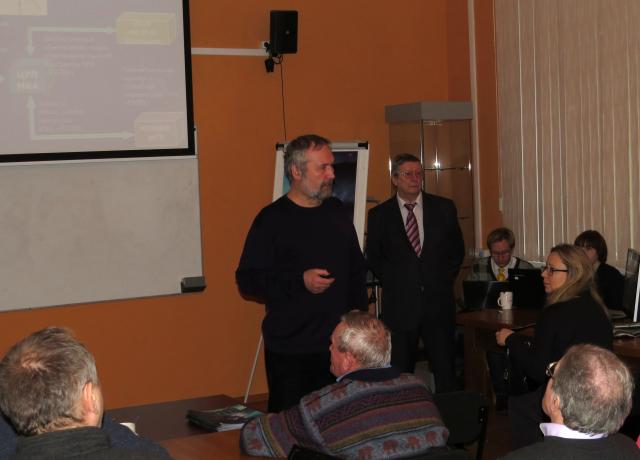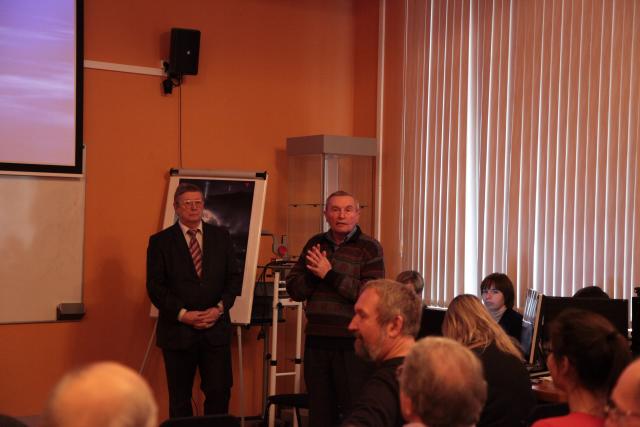
FERMI (GMB instrument) detected gamma-ray burst on October 11, 2014 (the sharpest peak in spectrum) as RELEC (in particular, DRGE-1(2) instrument)
Professor Anatoly Iyudin, the Head of the Extreme Universe Laboratory of SINP MSU, responsible for the analysis of the RELEC data in gamma-range told at the SINP seminar on December 10, 2014: "Gamma-ray bursts detection provides an opportunity for analyzing of rate of star formation at different stages of our Universe development, including early stages, when the first stars were formed."
As it happens RELEC (Relativistic ELECtrons) scientific equipment, intended for the studies of high-altitude electric discharges, atmospheric transient phenomena and relativistic electrons precipitations from the radiation belts of the Earth, can also detect gamma-ray bursts, coming from deep space. Gamma-ray bursts are the most powerful processes in the Universe with duration from portions of second up to several minutes. They are associated with collapse of massive stars at the final stages of their evolution.
According to Anatoly Iyudin, for the first time during the former 10 years gamma-ray bursts were detected onboard Russian satellite. Previously Russian instruments were placed onboard foreign spacecrafts.
He added: "The first gamma-ray burst was detected on August 7, the second - on October 11. NASA space gamma-telescope FERMI also detected gamma-ray bursts on these days".
Video from the seminar is available here.



